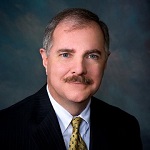Wiederhold and Associates will from time to time be presenting articles on subjects of interest and importance from our clients, past clients and most active network members. Mark Phelps will address the very hot topic of insurance exchanges under the affordable care act. Mark looks forward to your comments on his article.
____________________________
Insurance Exchanges and the Affordable Care Act
With President Obama's reelection a part of history, the movement to implement the Patient Protection and Affordable Care Act (ACA) has been ensured. When the ACA was heard by the Supreme Court, one case under consideration was filed by the National Federation of Independent Businesses. 1 The arguments in that case concerned the issue of whether Congress exceeded its power by requiring most Americans to buy health insurance or pay a fine. This provision was known as the individual mandate. 2
That mandate, along with four other major approaches, was the reason the ACA was drafted to attack the problem of the uninsured in our society. 3 The other approaches to combat un-insurance in the ACA were: 1) guaranteed coverage in plans provided by insurance companies; 2) the mandate to individuals to obtain health insurance; 3) state-run health insurance markets, called “exchanges,” where individuals and small employers’ workers can shop for insurance packages; and 4) expansion of the federal-state Medicaid program of care for the poor and the disabled. 4
The theory of insurance exchanges in the ACA was to offer "one stop shopping" for individuals and small businesses with affordable coverage. 5 It would also be the only place for Members of Congress to obtain their health insurance. 6
Insurance exchanges offer individuals and small businesses the ability to pool risk and purchasing power and therefore pay lower rates. 7 Affordable Insurance Exchanges are also modeled to provide users with the ability to determine if tax credits are applicable or if the user can enroll in programs such as the Children's Health Insurance Program (CHIP). 8
Rules were published by the Department of Health and Human Services (HHS) on March 12, 2012 regarding Affordable Health Insurance Exchanges. 9 The operational date for the Exchanges is January 2014. The rules published in March 2012 included standards for the following:
- The establishment and operation of an Exchange
- Health insurance plans that participate in an Exchange
- Determinations of an individual’s eligibility to enroll in Exchange health plans and in insurance affordability programs
- Enrollment in health plans through Exchanges
- Employer eligibility for and participation in the Small Business Health Options Program (SHOP) 10
- Those rules also specified that exchanges will perform certain functions listed below:
- Certifying health plans as “qualified health plans” to be offered in the Exchange
- Operating a website to facilitate comparisons among qualified health plans for consumers
- Operating a toll-free hotline for consumer support, providing grant funding to entities called “Navigators” for consumer assistance, and conducting outreach and education to consumers regarding Exchanges
- Determining eligibility of consumers for enrollment in qualified health plans and for insurance affordability programs (premium tax credits, Medicaid, CHIP and the Basic Health Plan)
- Facilitating enrollment of consumers in qualified health plans 11
Going into the Presidential election of 2012, individual states had a looming deadline of November 16, 2012 to notify the Department of Health and Human Services if they intended to set up their own insurance exchanges or enter into a state-federal partnership.12 At the request of state governors, HHS granted an extension until December 14, 2012 to respond to this deadline. 13 HHS clarified that there would be no further extensions of deadlines regarding the implementation of Exchanges in a Memorandum of Frequently Asked Questions (Memorandum) dated December 10, 2012. 14 This additional time gave state officials who were trying to determine whether there was enough political will, technical knowledge and time in their respective states to organize their own new health benefit marketplaces. 15
HHS further clarified in the Memorandum that if "a state plans to operate the Exchange in its state in partnership with the federal government starting in 2014", the state will need to declare "what partnership role they would like to have by February 15, 2013". 16 The deadline of February 15, 2013 has come and gone. We now know that the federal government will run 26 of the state health exchanges. 17 (Maine, New Jersey, Pennsylvania, Virginia, North Carolina, South Carolina, Georgia, Florida, Alabama, Tennessee, Ohio, Indiana, Mississippi, Louisiana, Missouri, Wisconsin, Texas, Oklahoma, Kansas, Nebraska, South Dakota, North Dakota, Montana, Wyoming, Arizona, Alaska) It also will partner with seven states, where state and federal officials take joint responsibility for the marketplace. 18 (New Hampshire, Delaware, West Virginia, Michigan, Illinois, Iowa, Arkansas) Seventeen states and the District of Columbia will take on the task themselves. 19 (Vermont, Massachusetts, Rhode Island, Connecticut, New York, Maryland, District of Columbia, Kentucky, Minnesota, Colorado, New Mexico, Utah, Idaho, Nevada, Washington, Oregon, California, Hawaii)
The legislative intent of the originally filed federal House of Representative bill for Obamacare in which the federal government would operate one large national insurance exchange may come close to reality with the latest actions of many of the states deciding to have HHS operate their exchanges by default. 20 It seems the Executive Branch of the government may ultimately have significant political power over setting up its signature legislative accomplishment. 21 Further, this will allow HHS to use economies of scale in creating a minimal number of template exchanges that many of the 26 states will use. 22
Mark T. Phelps is a healthcare attorney and an Assistant Professor in the Department of Healthcare Administration at Texas Woman’s University in Houston. He currently is working with healthcare clients on a consulting basis. If you have some interest in learning more about Mark, please Wiederhold & Associates know.
1. Kever, J., Only certainty from ruling on health care law is change, Houston Chronicle, 03-25-2012, from http://www.chron.com
2. Id.
3. Denniston, L., Analysis: Health care’s other mandate, December 19th, 2011, from http://www.scotusblog.com/2011/12/analysis-health-cares-other-mandate,
4. Id.
5. Affordable Insurance Exchanges, from http://cciio.coms.gov/proframs/exchanges/index.html
6. Id.
7. Id.
8. Affordable Insurance Exchanges, from http://www.HealthCare.gov
9. Affordable Insurance Exchanges: Choices, Competition and Clout for States, from http://www.healthcare.gov/news/factsheets/2011/07/exchanges07112011a.html
10. Id.
11. Id.
12. Adams, www.CQ.com, 11/9/12
13. Alonso-Zaldivar; More States Reveal Exchange Choices As Administration Extends Deadline; http://www.washingtontimes.com/news/2012/nov/16/states-reveal-their- choices-obamas-health-law/; 11-16-2012
14. Frequently Asked Questions on Exchanges, Market Reforms and Medicaid, Department of Health & Human Services, 12/10/12, from http://www.healthlawyers.org/News/Health20Lawyers20Weekly/Documents/12141 2/FAQs.pdf
15. Adams, www.CQ.com, 11/9/12
16. Frequently Asked Questions on Exchanges, Market Reforms and Medicaid, Department of Health & Human Services, 12/10/12, from http://www.healthlawyers.org/News/Health20Lawyers20Weekly/Documents/12141 2/FAQs.pdf
17. Kliff, It’s official: The feds will run most Obamacare exchanges, THE WASHINGTON POST, February 18, 2013
18. id.
19. id.
20. id.
21. id.
22. id.







 Debra Honey is a visionary Nurse Executive with more than 30 years of progressively responsible and diversified Nursing Leadership experience. She excels at leading healthcare transformational change initiatives and promoting impeccable standards of care within the industry.
Debra Honey is a visionary Nurse Executive with more than 30 years of progressively responsible and diversified Nursing Leadership experience. She excels at leading healthcare transformational change initiatives and promoting impeccable standards of care within the industry.